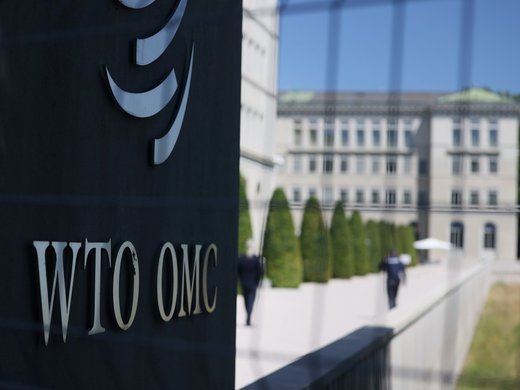A new chapter has opened in the ongoing saga of the South China Sea disputes. On October 27, for the first time the United States sent a warship near artificial islands claimed by China in the Spratly archipelago. Beijing responded angrily, tailing the guided-missile destroyer USS Lassen and calling Washington’s move “illegal.” The Chinese Ministry of Foreign Affairs also offered a stern warning to the United States: “If the relevant party keeps creating tension and stirring up troubles in the region, the Chinese side may have to reach the conclusion that we do need to step up and speed up relevant capacity building.”
Several months in the making, the decision by Washington to conduct this operation was meant to highlight both its refusal to recognize Beijing’s South China Sea claims and its long-standing commitment to the principle of Freedom of Navigation (FON). While China has repeatedly professed its support for FON, its actions have, at best, indicated that this principle is contingent upon its territorial claims. Indeed, the fact that Beijing asserted that American operations were illegal makes it clear that China claims territorial waters around the islands it has reclaimed at great speed within the last year. This position is in contravention of international law, since the United Nations Convention on the Law of the Sea (UNCLOS), to which China is a party, stipulates that man-made islands or rocks submerged at high tide do not allow for 12 nautical mile territorial waters.
While China has called Washington’s moves irresponsible and provocative, FON operations have been conducted regularly since 1979 and serve primarily as legal instruments meant to reinforce principles that are legally binding under UNCLOS. In the case of the South China Sea, short of an armed intervention, it remains the clearest means to send Beijing the message that their sovereignty over artificial islands will not be recognized. Numerous public admonitions from U.S. officials about FON have clearly not changed Chinese thinking on the South China Sea, which appears non-negotiable. Consequently, Washington has felt compelled to pursue a more forceful approach to the territorial disputes.
On Beijing’s part, it has already expended so much political capital and resources on its South China Sea claims that it cannot realistically back down without risking losing face or worse: its legitimacy in the eyes of its citizenry. As China is highly unlikely to use force on American ships, for fear of igniting a conflict neither side wants, we are set to witness a game of cat and mouse every time the United Sates conducts FON operations, with all the inherent risks this implies. With US Secretary of Defense Ashton Carter stating that further FON operations would be conducted and China expressing its commitment to defending what it deems its sovereign maritime domain, it is difficult to foresee an early resolution of the issue. What, in this case, can we reasonably expect?
Although armed conflict may not be likely, the reoccurrence of U.S. Navy patrols in Chinese-claimed waters means that Washington and Beijing are poised for months or years of sharpened tensions. So far, U.S.-China rivalry in the South China Sea does not seem to have undermined functional cooperation in non-military fields, but we may not have to wait long to see spillover effects. Any goodwill and trust that may have been created during the September summit between Xi Jinping and Barack Obama in Washington could be quickly squandered. This could affect negotiations on issues such as trade and climate change as well as on regional security matters such as the North Korean nuclear program, on which China and the United States share interests.
The only way to avoid potentially disruptive developments in the next few months would be for the United States and China agree upon a modus operandi in the South China Sea. One possible exit ramp would be to quietly agree to “shelve the dispute” in a similar arrangement as that between China and Japan regarding the Senkaku island dispute in the East China Sea. From the late 1970s to 2010, Tokyo and Beijing had essentially agreed to put their territorial dispute aside, as long as neither side tried to assert sovereignty over the islands. In the case of the South China Sea, shelving the dispute would imply a cessation of all reclamation work and moves that challenge the status quo. Needless to say, convincing parties to refrain from asserting their sovereignty over what they believe is rightfully theirs is a daunting task. Case in point: China and all ten ASEAN members had already agreed to exercise self-restraint in the 2002 Declaration on the Conduct of Parties in the South China Sea, to no visible avail.
Even in the unlikely event of a satisfactory arrangement between China and the United States, the number of claimants in the South China Sea disputes complicates any attempt at finding common ground for the whole of the body of water. Vietnam, the Philippines, Taiwan, Province of China, Malaysia and Brunei all have competing claims and little trust in China’s intentions. The fact that Beijing deliberately maintains ambiguity over the exact nature of its South China Sea claims makes it more difficult for these countries to oppose China on legal grounds. However, international law may play a role in the disputes and lend a helping hand to China’s opponents. On October 29th, the Permanent Court of Arbitration in The Hague ruled in favour of the Philippines, concluding that it had jurisdiction to take on the case it brought against China. The Court is expected to issue a decision in 2016, which may pressure Beijing to put an end to the strategic ambiguity over its territorial claims.
Notwithstanding the results of this case, with both Washington and Beijing firmly wedded to their irreconcilable positions, the South China Sea is likely to remain the central locus of their intensifying geopolitical rivalry for the foreseeable future. While neither side wants the situation to worsen, until they change their current trajectory, we have every reason to be concerned about the possibility of escalation.


